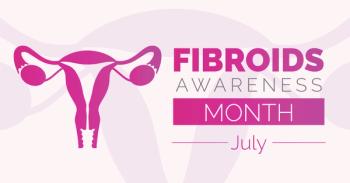
Considerations for Surgical Options for Treating Uterine Fibroids
Dr Mauricio Abrão leads a discussion on considerations for selecting the optimal surgical options for patients with uterine fibroids.
Episodes in this series

Mauricio Abrão, MD: This is a good moment for us to discuss surgical options.
Jessica A. Shepherd, MD, MBA, FACOG: That’s what you and I love. As minimally invasive gynecologists, we love surgical options, while understanding that there are medical options for patients. Historically, when we’ve seen fibroids, from a bleeding or even bulk standpoint, surgical options usually come into the algorithm of treatment options for patients. For both of us, our ideal options for patients may consider or include some surgical treatment. What would you consider for surgical treatment options? What do you think about the evolvement of expanding nonsurgical treatment options in that landscape?
Mauricio Abrão, MD: As you mentioned, we love surgery, but there is a concept that the best surgeon is one who knows when to not indicate surgery as well. This is very relevant for my patients and me in daily practice. One thing we should consider when we talk about the surgical indication is that, first, we need to think about infertility in patients, because most of these patients want to be pregnant or don’t have kids. Things like that should be the starting point for us as we think about the clinical and therapeutic options.
There’s another thing we consider when we talk about imaging. We work a lot with imaging in Brazil. We’re expanding the concept of imaging for endometriosis and many other things. When we talk about imaging, we calculate the volume of the uterus. That’s not something that all sonographers tend to do. The normal volume of the uterus is between 30 and 90 cc, and the turning point for us to start thinking about surgery—just talking about volume of the uterus—is more than 300 cc. That’s relevant for us to start thinking about, because when the volume is high, the uterus compresses other structures in the pelvis, and it’s additional factors for us to think about the impact on the quality of life.
The third thing is the presence of submucosal fibroids, because submucosal fibroids may be more associated with bleeding. In my opinion, it may also create more difficulty for the patient to get pregnant. One colleague compared the presence of submucosal fibroids with an IUD [intrauterine device] in terms of creating difficulties for the patient to get pregnant. When we combine the symptoms, the amount of bleeding, and the desire of the patient to be pregnant—all these aspects—we’re ready to define. With a volume of more than 300 cc, bleeding, and submucosal fibroids, we’re going to decide to do the surgical treatment. The type of surgical treatment depends on the future pregnancies the patient may have. What do you think about these ideas?
Jessica A. Shepherd, MD, MBA, FACOG: I love those ideas. I love that imaging plays an important part on how to stratify your patient. Fertility is something that over the last few years is becoming an important part of how we counsel patients. In the past, we didn’t pay as much attention to fertility in the discussion. That’s not to say that everyone has this abounding desire to have children. For women who don’t want children, that’s completely fine as well. It doesn’t mean that every woman wants to have a child, but we need to put that into the conversation much earlier than we were in the beginning.
I’m glad you brought up submucosal fibroids. When we think of the location of fibroid, there are many things about a submucosal fibroid that can change the algorithm or how we have a discussion about management with patients. From a fertility standpoint, it’s an impeding factor to fertility. But it also affects bleeding. In terms of location, we typically see that patients have more bleeding with submucosal fibroids.
One thing I love about submucosal fibroids, if I were to say anything about loving a fibroid, is that the location allows for a lot of minimal invasive procedures from a hysteroscopic standpoint. We’re seeing the advent or broadening of the platform on radiofrequency treatment of fibroids as well from a submucosal standpoint. Submucosal fibroids bring fertility into this category, but when it comes to management, patients can have big outcomes as far as decrease in bleeding, improvement in infertility, and a minimally invasive approach from a hysteroscopic standpoint that allow fibroids to be dealt with in a very concise and effective manner that allow patients to go on with their daily life very quickly.
We have evolved substantially when we think of surgical treatments or minimally invasive surgical treatments and even nonsurgical treatment landscapes. In your practice, when we think of surgical options, and now even blending medical management into fibroids, how has that evolved in your practice, Mauricio?
Mauricio Abrão, MD: You mean the decision between both strategies?
Jessica A. Shepherd, MD, MBA, FACOG: Yes.
Mauricio Abrão, MD: Before jumping to this point, I’d like to remind everybody that something very relevant as well is the association between fibroids and adenomyosis.
Going back to the discussion about the importance of the imaging, sometimes when there’s an association between both situations, we need to consider this for this purpose. We have to consider these aspects that I mentioned for us to move ahead and make the decision about surgery and clinical treatment. When we talk about surgery, we need to consider myomectomies and the possibility of doing hysterectomies if the patient doesn’t have the desire to be pregnant in the future. Depending on the volume of the uterus, all these approaches tend to be minimally invasive. Nowadays, not thinking minimally invasively isn’t good for the patients. As specialists, we need to think a lot about this. But we have some clinical options to be considered that we should discuss. There are medical options to manage the fibroids, starting with the combination between estrogen and progesterone, progesterone alone, and other aspects.
Transcript Edited for Clarity
Newsletter
Get the latest clinical updates, case studies, and expert commentary in obstetric and gynecologic care. Sign up now to stay informed.







